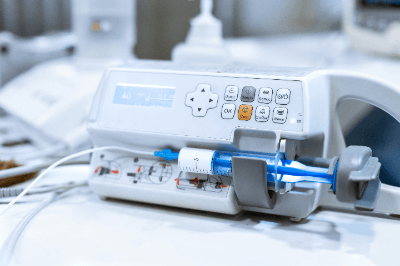What Is a Sequencer?

A sequencer, also called a programmable logic controller (PLC), is a device that controls the operation of a machine according to a programmed condition or sequence.
Its name comes from the sense of something that moves a machine in sequence. In recent years, sequencers can also control analog signals such as pressure and communicate information between devices.
Uses of Sequencers
Sequencers are mainly used industrially. They can be found in a wide variety of applications, ranging from heavy industrial infrastructure such as power plants and waste disposal plants to processing plants that make microchips. Sequencers are mainly used to automate machinery and equipment. They allow machines to automatically perform repetitive operations, thus saving labor.
Home appliances such as washing machines also use sequence control, but microcomputers are used for the control devices. This is because it is more economical to use microcomputers for mass-produced machines. Sequencers are often used for certain industrial equipment, and in everyday life, you may see them in the driver’s seat of a train.
Principle of Sequencers
A sequencer consists of a power supply unit, board, input unit, output unit, memory, and arithmetic unit (CPU). The internal drive power supply of the sequencer is a weak DC voltage; a commercial power supply of about 100 VAC to 240 VAC is converted to a weak DC voltage in the power supply section.
The power supplied from the power supply unit is distributed to each part by the board. The board also transmits input/output signals from the arithmetic section to the input/output section. Input signals from sensors and pushbutton contacts are transmitted to the input section of the sequencer. Depending on the type of input section, contact digital signals or voltage analog signals can be input.
In the sequencer, decisions are made based on a program written in advance by the arithmetic section. The arithmetic section constantly scans the program at ultra-high speed. When an output decision is made by the program, an output signal is sent from the output section of the sequencer.
The output signals are used to operate motors, lamps, and other devices. Like inputs, output signals can be analog or digital outputs. Programs and input/output devices on/off information are temporarily stored in the sequencer’s memory. The ladder diagram method, in which the sequence circuit is logicized, is frequently used for the program.
Programming tools exist for each device of each company, and these tools are used to edit the program. Inside the sequencer, analog signals are also treated as digital signals. Digital signals refer to data represented only by 0s and 1s, while analog signals represent not only 1s and 0s but also continuous data. Examples of analog data include measuring instruments such as thermometers and pressure gauges.
Advantages of Using Sequencers
The greatest advantage of using a sequencer is the labor-saving wiring for control. In the case of digital input/output only, it can be reproduced by a relay circuit without using a sequencer. However, if relay circuits are used for complex control, the wiring becomes more complicated, and production and maintenance take an enormous amount of time. In complex control, sequencers are often used for labor and cost reasons.
In recent years, automatic data collection and complex signal processing can also be realized with sequencers. Some devices can communicate with the Internet via an Ethernet port or wirelessly with a PC. Sequencers have also become more reliable, with redundant power supplies and arithmetic units becoming possible. Today, sequencers are indispensable in industrial settings.